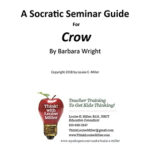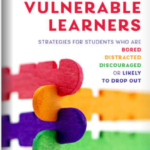![]() By Jerry Burkhart
By Jerry Burkhart
These widely-held beliefs lead to decisions that prevent bright students from reaching their full mathematical potential. Each holds a grain of truth but hides a deeper truth.
Myth 1: Math is mainly about performing procedures accurately and quickly.
A grain of truth: Procedural fluency is one of many components of math proficiency.
The deeper truth: Math is mainly about understanding, creating, and reasoning about patterns and relationships.
Myth 2: Mathematically talented people have special abilities that ordinary people lack.
A grain of truth: People have different capacities for understanding and doing math.
The deeper truth: Math ability is changeable, and most people, bright ones included, greatly underestimate their mathematical potential.
Myth 3: Acceleration is highly effective in meeting the needs of bright math students.
A grain of truth: Acceleration meets some needs of some bright math students.
The deeper truth: Acceleration as typically practiced inhibits many students’ learning and growth in math.
Myth 4: Skill-based math tests can effectively measure bright students’ abilities and learning.
A grain of truth: Skill-based math tests provide some insight into bright students’ abilities and learning.
The deeper truth: Skill-based math tests alone are insufficient and are often misinterpreted.
Myth 5: Elementary teachers do not need to understand math deeply.
A grain of truth: Elementary teachers do not need extensive knowledge of secondary mathematics.
The deeper truth: All math teachers need and can gain deep knowledge around the content that they teach.
Myth 6: Bright math students’ needs can be met entirely within mixed-ability classrooms.
A grain of truth: All students can benefit when bright students take part in mixed-ability math classrooms.
The deeper truth: Bright math students also need frequent, focused opportunities to talk and work with others who are thinking at similar levels.
Myth 7: Identifying needs of bright math students is necessarily harmful and elitist.
A grain of truth: Elitism exists in gifted education and has negative consequences.
The deeper truth: Identifying bright math students and meeting their needs can support all students’ learning.
Myth 8: Bright math students learn best from tasks just beyond their comfort level.
A grain of truth: Students should work only on math tasks that they can make sense of.
The deeper truth: Highly challenging tasks also play an important role in meeting the needs of bright math students.
Myth 9: Bright students can learn math on their own.
A grain of truth: Many bright students are good at learning certain aspects of math independently.
The deeper truth: Nearly all math students need significant guidance in order to fully develop their potential.
Myth 10: Bright math students deserve special opportunities and experiences.
A grain of truth: Bright math students, like all others, benefit from having a range of choices and opportunities.
The deeper truth: Experiences that target a student’s needs should be treated as neither optional nor special.
Questions to consider: What does the myth sound and look like? What are the consequences?
What can I do?
Jerry Burkhart is an advocate for challenging math for adventurous learners. The founder of 5280 math, he is a math innovator who crafts math experiences that stretch students’ minds. He is the author of the math series Advanced Common Core Math Explorations for Prufrock Press. His bio and resources on MyEdExpert are located here. His website has tremendous resources for educators.
NOTE: “Ten Myths That Hold Bright Hold Bright Students Back” by Jerry Burkhart was printed with the permission of Jerry Burkhart. This is article is also on his website.











